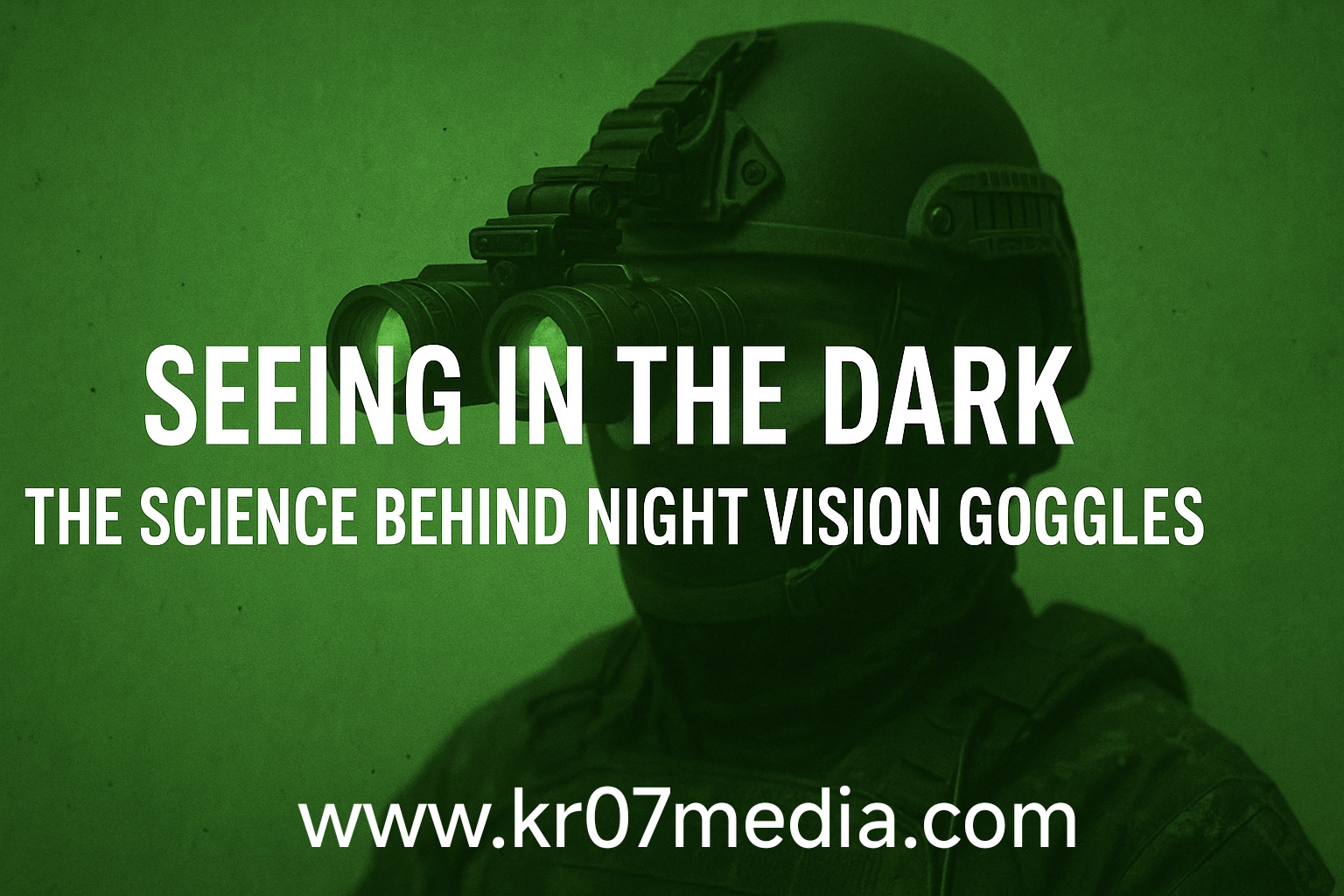In complete darkness, the human eye becomes nearly blind. But for soldiers, wildlife researchers, rescue teams, and even nocturnal explorers, the ability to see in the dark can mean the difference between life and death. Enter night vision goggles — technological marvels that enable us to peer into the darkness as if it were daylight. But how do these fascinating devices work? What is the science behind our ability to "see" in the dark? Let’s take a closer look.
The Basics of Night Vision
Night vision goggles (NVGs) are optical instruments designed to enhance visibility in low-light environments. They do this by detecting and amplifying very small amounts of light — including near-infrared light — that are invisible to the naked eye.
There are two main types of night vision technologies:
Image Enhancement (Image Intensification)
Thermal Imaging
Each uses different scientific principles, and each is suited for specific tasks.
Image Enhancement: Amplifying the Available Light
Image enhancement is the more common technology used in night vision goggles. These systems rely on the small amount of ambient light (such as moonlight, starlight, or even distant artificial lights) present in most nighttime environments.
How it works:
Photon Collection
Light (photons) enters the goggles through the objective lens.
Photocathode Conversion
The photons strike a photocathode, a light-sensitive surface that converts them into electrons.
Electron Acceleration and Multiplication
These electrons are accelerated and passed through a microchannel plate (MCP) — a tiny component that multiplies the number of electrons thousands of times.
Phosphor Screen Illumination
The multiplied electrons hit a phosphor screen, causing it to glow and form a visible image in shades of green — a color chosen because the human eye can distinguish more shades of green than any other color.
Eyepiece Magnification
The eyepiece magnifies this image and presents it to the viewer.
The result? A clear, green-tinted image of the darkened environment.
Thermal Imaging: Seeing Heat Instead of Light
Unlike image enhancement, thermal imaging doesn't require any visible light at all. Instead, it detects infrared radiation — the heat emitted by all objects above absolute zero (−273.15°C or −459.67°F).
How it works:
Infrared Detection
A thermal sensor detects temperature differences in a scene. Warm objects, like humans and animals, emit more infrared radiation than cooler backgrounds.
Signal Processing
The sensor converts these infrared signals into electronic data.
Image Rendering
A digital image processor renders these signals into a false-color image that can be viewed on a screen — usually showing warmer objects in brighter colors.
Thermal night vision is especially useful in complete darkness, dense smoke, or fog, where light-based systems fail.
Why Are Night Vision Images Green?
The green glow of most night vision goggles is iconic. But it’s not just an aesthetic choice — it's a practical one. The human eye is more sensitive to green light, especially in low-light conditions. This allows for better contrast and less eye fatigue during prolonged viewing. Additionally, phosphor screens (used in image enhancement) naturally emit a green image when excited by electrons.
Applications of Night Vision Goggles
Military and Law Enforcement: Tactical night operations, surveillance, navigation, and reconnaissance.
Search and Rescue: Locating missing persons in dark forests or collapsed buildings.
Wildlife Observation: Monitoring nocturnal animals without disturbing their natural behavior.
Aviation and Driving: Pilots and drivers in low-light or zero-visibility conditions.
Limitations of Night Vision
While incredibly useful, night vision goggles do have some limitations:
Depth Perception Issues: Many devices offer monocular or flat 2D vision.
Blinding by Bright Light: Sudden bright light can damage the intensifier or blind the viewer.
Narrow Field of View: Most NVGs offer a limited field of vision compared to natural sight.
Battery Dependency: They require power sources to function, making them vulnerable to power loss.
The Future of Night Vision
Advancements in sensor technology, artificial intelligence, and materials science are pushing the boundaries of what night vision can do. The latest NVGs now feature:
Digital image fusion (combining thermal and light amplification),
Color night vision, and
Augmented reality overlays for navigation and target identification.
As these technologies continue to evolve, night vision will become lighter, smarter, and more accessible — helping not just soldiers and scientists, but also ordinary people navigate and understand the world around them in total darkness.
Conclusion
Night vision goggles are a testament to human ingenuity — a perfect blend of physics, optics, and electronic engineering. By transforming the invisible into the visible, they allow us to experience a hidden world that exists right before our eyes. Whether you're protecting a perimeter or simply observing nocturnal wildlife, NVGs make the impossible possible: seeing in the dark.



